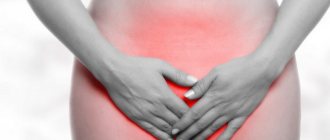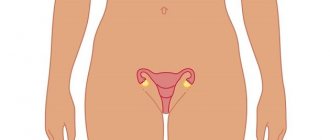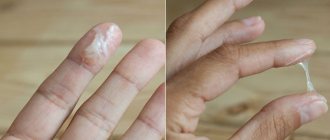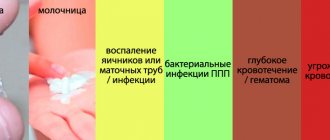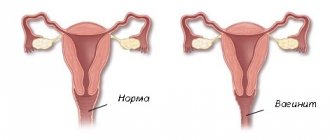During reproductive age, a woman's vagina secretes varying amounts of secretions. The consistency and color of the discharge directly depend on the menstrual cycle. However, sometimes yellow discharge after childbirth takes on the appearance that is characteristic of some genitourinary infections. Therefore, any of their external deviations alarm many women.
A week after giving birth: discharge and its color
For young mothers, especially those who have given birth for the first time, everything seems strange and incomprehensible. Not only do you have to master a new role - being a mother, learning to breastfeed, but you also need to take care of your body. For example, yellow discharge after childbirth frightens women who have recently given birth. It is worth knowing the physiological side of their appearance.
When a woman gives birth to a baby, her body begins to change rapidly. There is no longer a need to carry a child in the womb, and therefore everything returns to its pre-pregnancy state.
Postpartum discharge lasts quite a long time: from two weeks to one and a half months. The reason for such a long process is the release of the placenta, which is firmly attached to the wall of the uterus. Now a wound will form in it, which will heal. This is what causes postpartum bleeding. As a rule, the discharge is bright red. However, the shades of each individual woman can vary: from dark brown to light pink.
The color of the discharge depends on how long the discharge continues after childbirth. At the very beginning they are brighter, burgundy, and after a couple of weeks they are lighter.
Vaginal secretion after childbirth changes its consistency. Any deviations, such as the color and amount of discharge, alarm every new mother.
How to help yourself
All women who are faced with this problem think about how to make their lives easier and eliminate unpleasant symptoms. The smell that arises in lochia after childbirth brings considerable discomfort to the young mother and frightens her very much. Sometimes women look for a way out of this situation on their own, without consulting a doctor. Very often, young mothers, due to lack of time, use traditional methods, listen to the advice of friends, or completely ignore the ailment.
It is important to remember that you should never self-medicate!
After the pregnancy period, this is strictly prohibited, as there is a possibility of irreparable complications and even death.
Read also Why the lower abdomen hurts 1-2-3-4-5 months after childbirth
Here's how you can help yourself without harming your health:
- Follow the rules of hygiene (you need to wash yourself very often - after each visit to the toilet).
- To soothe irritated skin, you can use herbal decoctions (chamomile, calendula, string, sage).
- Taking a bath is strictly prohibited, only showering is allowed.
- You should not visit the bathhouse, sauna or swimming pool.
- Intense physical activity should be avoided.
- Training in the gym is strictly prohibited.
- It is better to use condoms during intimacy.
- Breastfeed your baby more often (regular latching will help the uterus contract faster).
- For better contraction of the abdominal muscles, it is recommended to spend most of the time on the stomach (during rest and sleep).
- Even if there is no urge, you need to visit the toilet regularly.
It is very important to monitor your health. The body is now very weakened and any infection or virus can easily penetrate it. To avoid this, you need to protect yourself: use condoms during sexual intercourse, take a complex of vitamins, eat plenty of vegetables and fruits, and monitor the level of iron in your blood.
Yellow discharge: normal or not?
It is believed that a woman who breastfeeds her baby goes through the stage of postpartum discharge much faster. The uterus contracts more intensely, and therefore returns to its postpartum state more quickly. However, during this period, girls need to be as careful as possible in terms of their hygiene. Yellow discharge may appear precisely when this rule is not followed. In addition, doctors strictly prohibit the use of anything other than pads. For example, tampons. They delay the normal process of cleansing the uterine cavity. During normal menstruation, this is not critical, but immediately after the birth process, blood should flow freely.
In most cases, yellow discharge is normal. Especially during the period when lochia ends. The blood mixes with the secretion, sometimes acquiring a yellowish tint. If there is no smell, pain or itching, then most likely there is no need to worry.
It happens that even at the final stage of postpartum discharge, a woman notices streaks of blood on the pad. This is also normal because the uterus needs quite a long time to heal.
Duration
Every inexperienced woman in labor is interested in how many days the discharge lasts after childbirth. Uninformed women panic when they last longer than their normal period. This comes from ignorance of the physiology of this process. The purpose of menstruation is to release the “unused” egg. Lochia cleanses the uterine cavity, promoting its rapid contraction. Therefore, their duration is much longer. Normally it is from three to eight weeks. For some girls, especially young ones, this process may go faster. If the discharge lasts longer than expected, you should consult a doctor. It is possible that this process was complicated by bleeding.
There are cases when a woman gives birth with internal ruptures. At the same time, she should not actively move or even sit to avoid damage to the seams. However, not everyone manages to follow such a strict rule. In this case, the stitches tear and begin to bleed.
The closer to completion the process of lochia secretion, the lighter they become. Pain in the abdomen disappears, secretion becomes less abundant. If a month after giving birth the discharge is yellow, you should not be alarmed. This is a normal phenomenon that predicts the imminent end of lochia.
What should normal postpartum discharge be like?
For the female body, childbirth is a serious test. It is natural to assume that the organs of the reproductive system need restoration. Usually 6–8 weeks are enough for them. The most significant changes occur in the uterus; they begin immediately after the placenta separates from its surface. The uterus begins active contractions in order to return to its normal size. After childbirth, the internal surface of the organ is injured, so for 2-3 days there is heavy bleeding, which gradually decreases and continues up to 8 weeks - lochia.
Heavy bleeding for 2-3 days after childbirth is the absolute norm, and scanty or excessively heavy discharge should be the reason to consult a doctor
Normal discharge does not have a strong odor or smells like blood. Subsequently, the lochia reduces its intensity and changes color to a lighter color. On the 6th–7th day after delivery, the secretion normally acquires a brown tint.
Please note: if a young mother is breastfeeding or practicing active exercise, the secretion may become more abundant. The more actively the abdominal muscles contract, the more abundant the discharge will be.
Table: normal discharge after childbirth
| Days after childbirth | Color of secretion |
| Two to three days | Bright red, strong, a regular gasket won't suffice |
| Until the end of the first week | Reddish-brown, dark, sometimes black |
| After the first week and up to 5–6 weeks | Brown, yellow-brown, similar to menstrual smear with clotted blood |
| 6–8 weeks | Beige, white-yellow, light, yellowish |
Discharge is normally not accompanied by discomfort in the form of itching, irritation and unpleasant odor; it becomes less pronounced over time and completely disappears on the 45th–60th day after delivery.
Important: after the lochia has stopped, the woman must undergo an examination by a gynecologist.
Video: recovery of the mother’s body after childbirth
Pathology
Yellow discharge in some situations can signal diseases of the genitourinary system. The body of a woman in labor is more vulnerable to various infections. You should be wary if some of the following signs are added to such discharge:
- Stomach ache. Especially cutting ones. At the very beginning, this is normal as the uterus contracts. But, for example, after a month this phenomenon is most likely a pathology.
- Unpleasant smell. This may indicate an infectious disease.
- Greenish-yellow discharge after childbirth mixed with pus indicates that the girl urgently needs to see a doctor. Inflammation is likely occurring.
- Itching and severe burning.
- Excessively long (more than two weeks) discharge that is yellow in color.
- Body temperature is more than 37.
Inflammation of internal organs
It happens that the infectious process after childbirth develops not in the vagina, but in the uterus and appendages of the woman. This is due to damage to the tissues on which pathogenic microbes develop. Endometritis, cervicitis, adnexitis, salpingitis - these terms refer to inflammation of the female genital area at the site of localization. If the disease is not treated, then there are 2 options:
- Transition to the chronic stage. Sluggish development leads to dysfunction of organs, adhesions, and infertility.
- Acute purulent inflammation is dangerous due to tissue rupture and leakage of infected fluid into the peritoneum. The result is peritonitis, sepsis, and death.
Symptoms:
- Discharge of a yellow, green hue with a putrid odor;
- Pain in the lower abdomen;
- General malaise;
- Temperature increase.
See a doctor immediately!
If a woman is attentive to her health, then an infection that could get into the vagina will be cured quickly enough. However, if you start this process, the consequences can be disastrous. The most harmless disease is cervical erosion in the initial stage. But if it is not diagnosed and treated in time, it can turn into a malignant form.
Reduced immunity of a young mother can lead to thrush or colpitis. In this case, the discharge will not just be yellow, but also have a cheesy consistency.
Diagnostic measures
If uncharacteristic discharge with an unpleasant odor appears, a woman is advised to visit a gynecologist to find out the cause of this condition. Typically, the patient needs to undergo a number of diagnostic measures:
- examination on a gynecological chair (the doctor assesses the condition of the vagina, cervix and sutures);
- vaginal smear to determine pH, culture and identify pathogenic microflora;
- ultrasound examination of the reproductive organs;
- general analysis of urine and blood;
- biochemical blood test (if necessary).
Recommendations
To ensure that none of the women encounters troubles associated with discharge after childbirth, experts recommend strictly following hygiene rules. The uterus is completely cleansed of the waste products of the baby in the womb, and therefore the blood that comes out is not at all similar to menstrual blood. For this reason, precautions should be taken more carefully after the baby is born.
- Only pads should be used, tampons are prohibited. Today, pharmacies sell special postpartum hygiene bags. They allow the skin to breathe and can absorb quite a lot of blood.
- Hygiene products should be changed as often as possible. It is best to do this once every three hours or, if necessary, earlier.
- Be sure to wash yourself several times a day. If there are external breaks, you can use a weak solution of potassium permanganate or chamomile decoction.
- Underwear should be as comfortable and natural as possible.
- Yellow discharge after childbirth is usually a common occurrence, only if it does not last long. Therefore, to avoid infection in the vagina, take a shower rather than a bath.
- You should abstain from sex. An open wound in the uterus during sexual intercourse can become very painful and begin to bleed more profusely.
- Be vigilant if lochia ends after a month and a half and suddenly returns again. Perhaps this is no longer postpartum discharge, but bleeding that has begun.
Preventing infections
In order to avoid infection, you need to wash yourself with natural soap and shower regularly. You also need to change the gaskets regularly. This should be done every three hours. It is recommended to buy pads made from natural materials. Scented pads should not be used.
Do not use tampons or douche.
During the period while there is discharge from the vagina, you cannot have sexual intercourse. This may damage the vagina or cause infection.
